The American Revolution was a momentous period in history that unfolded between 1775 and 1783. It was a conflict between the Thirteen Colonies in North America and Great Britain, where the colonists sought independence and self-governance.
The Revolution was sparked by rising tensions over issues such as taxation without representation and limitations on colonial freedoms.
The revolutionaries fought against the British forces to secure their liberty and establish a new nation were led by influential figures like:
- George Washington
- Thomas Jefferson
- Benjamin Franklin
Through significant events like the Battles of Lexington and Concord, the adoption of the Declaration of Independence, and the decisive Battle of Yorktown, the colonists emerged victorious, culminating in the recognition of the United States as an independent nation in the Treaty of Paris.
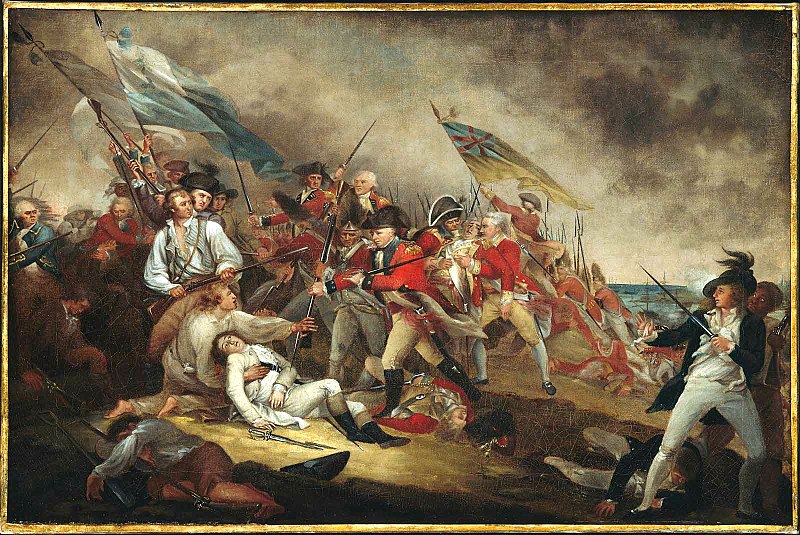
The American Revolution marked a turning point in world history, inspiring other nations and shaping the ideals of freedom, democracy, and individual rights that continue to resonate to this day.
| Year | Date | Event |
|---|---|---|
| 1775 | April 19 | Battles of Lexington and Concord mark the beginning of the armed conflict |
| May 10 | The Second Continental Congress convenes in Philadelphia | |
| June 17 | Battle of Bunker Hill takes place near Boston | |
| 1776 | July 4 | The Second Continental Congress adopts the Declaration of Independence |
| August 27 | Battle of Long Island occurs in New York | |
| December 26 | George Washington leads a surprise attack at the Battle of Trenton | |
| 1777 | September 19-October 7 | Battles of Saratoga in New York result in a major victory for the Americans |
| December 19 | George Washington’s Continental Army enters winter quarters at Valley Forge | |
| 1778 | February 6 | France officially recognizes the United States and signs the Treaty of Alliance |
| June 28 | Battle of Monmouth takes place in New Jersey | |
| 1780 | May 12 | Charleston, South Carolina, falls to the British |
| October 7 | Battle of Kings Mountain occurs in South Carolina | |
| 1781 | January 17 | Battle of Cowpens takes place in South Carolina |
| September 5-October 19 | Battle of Yorktown in Virginia becomes the decisive battle of the Revolution | |
| 1783 | September 3 | The Treaty of Paris is signed, formally ending the war and recognizing the United States as an independent nation |
American Revolution Timeline
1775
In 1775, several significant events took place during the American Revolution. Here are some key events from that year:
1. Battles of Lexington and Concord (April 19, 1775)
These battles were the first military engagements of the American Revolution. British troops, aiming to seize colonial weapons and capture rebel leaders, clashed with colonial militia in the towns of Lexington and Concord, Massachusetts.
The confrontations resulted in casualties on both sides and marked the start of open armed conflict between the American colonists and the British forces.
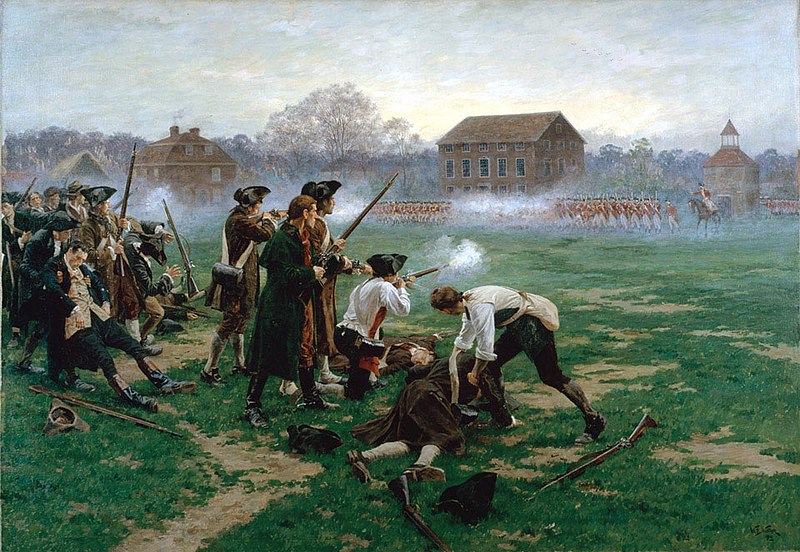
2. Second Continental Congress (May 10, 1775)
The Second Continental Congress convened in Philadelphia as a response to the escalating hostilities with Great Britain. It served as the governing body for the American colonies during the Revolution.
The Congress was composed of representatives from each colony and played a crucial role in organizing the war effort, making important decisions, and shaping the path towards independence.
3. Battle of Bunker Hill (June 17, 1775)
Fought on the outskirts of Boston, Massachusetts, the Battle of Bunker Hill was a significant early engagement of the American Revolution.
American militia, led by Colonel William Prescott, fortified Breed’s Hill and repelled several British assaults before eventually being overwhelmed due to a lack of ammunition.
Although the British won the battle, they suffered heavy casualties, and the American forces showcased their determination and ability to stand up against a professional army.
4. Olive Branch Petition (July 5, 1775)
As a last-ditch effort to reconcile with Great Britain, the Second Continental Congress sent the Olive Branch Petition to King George III. The petition expressed the colonists’ desire for peace and a resolution of grievances while reaffirming their loyalty to the British Crown.
However, the King refused to receive the petition and declared the colonies in rebellion, further escalating tensions between the two sides.
1776
In 1776, the American Revolution entered a pivotal year with significant events that shaped the course of the conflict. Here are some key events from that year:
1. Declaration of Independence (July 4, 1776)
One of the most iconic moments in American history, the Second Continental Congress adopted the Declaration of Independence on July 4, 1776.
This document, primarily drafted by Thomas Jefferson, proclaimed the colonies’ separation from Great Britain and asserted the fundamental rights of all individuals, including the right to life, liberty, and the pursuit of happiness.
2. The Battle of Long Island (August 27, 1776)
Also known as the Battle of Brooklyn, it was a major confrontation between British forces under General William Howe and American troops commanded by General George Washington.
The battle resulted in a decisive British victory, forcing the American forces to retreat from Long Island to Manhattan. Although the Americans suffered a defeat, they managed to evacuate their troops and continue the fight.
3. Crossing the Delaware and the Battle of Trenton (December 25-26, 1776)
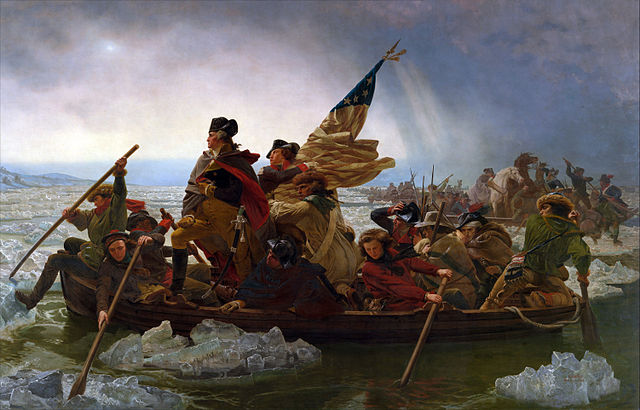
Facing low morale and expiring enlistments, General George Washington devised a daring plan to cross the icy Delaware River on Christmas night.
The following morning, the Continental Army launched a surprise attack on Hessian troops stationed in Trenton, New Jersey. The Americans achieved a resounding victory, boosting morale and reinvigorating the Revolution.
4. Thomas Paine’s “Common Sense” (January 1776)
Published in January 1776, Thomas Paine’s pamphlet, “Common Sense,” became a powerful influence on public opinion and played a significant role in promoting the idea of American independence.
Paine’s eloquent and persuasive arguments against monarchy and for self-governance resonated with many colonists, further fueling the desire for independence.
1777
The events of 1777 showcased the evolving nature of the American Revolution. The American victory at Saratoga secured foreign support, Valley Forge tested the endurance of the Continental Army, the Articles of Confederation laid the foundation for a new government, and the Battle of Brandywine demonstrated the challenges faced by the American forces. Here are some important events from that year:
1. Battles of Saratoga (September 19 – October 7, 1777)
The Battles of Saratoga in upstate New York were a turning point in the American Revolution. American forces, led by General Horatio Gates and supported by Benedict Arnold, successfully defeated the British army under General John Burgoyne.
The decisive American victory at Saratoga convinced the French to openly support the American cause, providing vital aid and forming a crucial alliance.
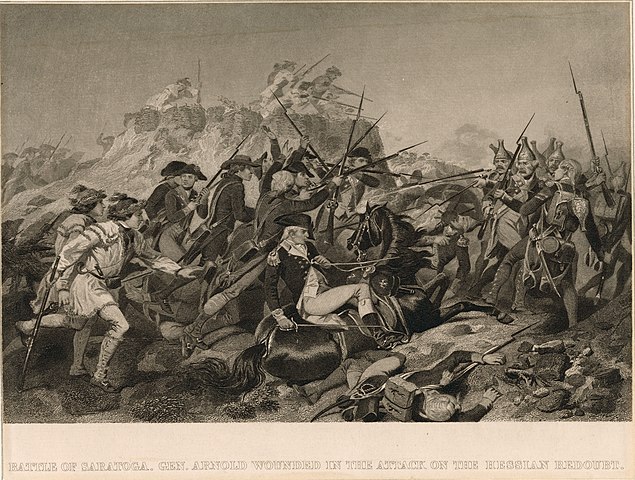
2. Winter at Valley Forge (December 1777 – June 1778)
Following the battles at Saratoga, General George Washington’s Continental Army faced a harsh winter at Valley Forge, Pennsylvania.
The troops endured severe cold, scarcity of supplies, and disease. However, this challenging period also served as an opportunity for Washington to reorganize and train his forces, leading to increased discipline and resilience.
3. Articles of Confederation (November 15, 1777):
The Continental Congress adopted the Articles of Confederation, which served as the first constitution of the United States.
Although the Articles had limitations and were eventually replaced by the U.S. Constitution, they provided a framework for governance during the Revolutionary War era and represented an early attempt at establishing a unified nation.
4. Battle of Brandywine (September 11, 1777):
The Battle of Brandywine, fought near Philadelphia, Pennsylvania, was a significant engagement between British forces under General William Howe and the Continental Army led by General George Washington.
The British victory allowed them to capture Philadelphia, the capital of the United States at the time, but the American forces managed to avoid complete destruction and continued to resist.
1778
The events of 1778 demonstrated the increasing international involvement in the American Revolution, with the Treaty of Alliance solidifying the alliance with France.
The Battle of Monmouth showcased the progress of the Continental Army, while the Wyoming Valley Massacre highlighted the complexities and tragedies of the conflict.
The Treaty of Fort Pitt sought to navigate relationships with Native American tribes during the war. Here are some important events from that year:
1. Treaty of Alliance with France (February 6, 1778)
The American colonies secured a significant diplomatic victory when they signed the Treaty of Alliance with France. The treaty formalized an alliance between the American colonies and France, bringing crucial military and financial support to the American cause.
France’s entry into the war as an ally of the Americans marked a major shift in the balance of power and increased the pressure on the British.
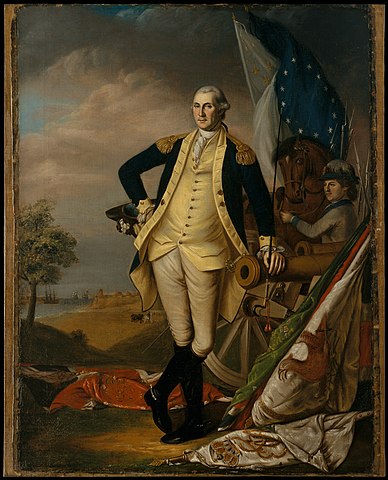
2. Battle of Monmouth (June 28, 1778)
Fought in Monmouth County, New Jersey, the Battle of Monmouth was a significant clash between the Continental Army, led by General George Washington, and the British Army, commanded by General Sir Henry Clinton.
Although the battle ended in a tactical draw, it showcased the improved training and discipline of the American forces. The engagement marked one of the largest battles of the war and further boosted American morale.
3. Wyoming Valley Massacre (July 3, 1778)
In the Wyoming Valley of Pennsylvania, a force of British soldiers and Native American allies attacked the American frontier settlement. The British-led forces launched a brutal assault, resulting in the massacre of many American settlers.
The event underscored the atrocities committed during the war and intensified tensions between colonists and Native American tribes.
4. Treaty of Fort Pitt (September 17, 1778)
The Treaty of Fort Pitt was a significant diplomatic agreement between the United States and several Native American tribes, including the Delaware, Shawnee, and Wyandot nations.
The treaty aimed to secure neutrality or support from these tribes in the American Revolutionary War. It sought to maintain a delicate balance of alliances and prevent Native American tribes from aligning with the British.
1779
These events in 1779 highlighted the continuation of military operations and strategic maneuvers in various regions.
The capture of British forts in the Hudson River showcased the American forces’ ability to disrupt British control, while the Battle of Stono Ferry demonstrated the persistence of fighting in the southern colonies.
The failed assault on Savannah and Sullivan’s Expedition reflected the challenges and complexities of the war, particularly in relation to the Native American alliances and the southern theater of the conflict.
1. Capture of British forts in the Hudson River (June 1-19, 1779)
In a strategic operation led by General George Washington and General John Sullivan, American forces successfully captured several British forts along the Hudson River, including Forts Stony Point and Verplanck. These victories helped secure control over the vital waterway and disrupted British supply lines.
2. Battle of Stono Ferry (June 20, 1779)
This battle took place near Charleston, South Carolina. The British, under the command of Lieutenant Colonel John Maitland, repelled an American assault led by General Benjamin Lincoln.
While the British technically won the battle, the American forces demonstrated their ability to challenge British control in the southern colonies.
3. Capture of Savannah (December 29, 1779)
A combined French and American force, led by General Benjamin Lincoln and French Admiral Charles-Henri d’Estaing, launched a failed assault on Savannah, Georgia.
The British, under General Sir Archibald Campbell, successfully defended the city, resulting in heavy casualties for the attacking forces.
4. Sullivan’s Expedition (June-October 1779)
In response to ongoing Native American and British attacks on American frontier settlements, General John Sullivan led an expedition into Native American territory in present-day upstate New York.
The expedition aimed to neutralize Native American tribes aligned with the British and destroy their villages and crops. While the expedition achieved some success in dispersing Native American forces, it did not completely eliminate British-allied Native American resistance.
1780
The events of 1780 revealed both successes and setbacks for the American Revolution. The fall of Charleston and the defeat at Camden dealt significant blows to the American cause in the South, but the American victory at the Battle of King’s Mountain showcased the resilience of Patriot forces.
Benedict Arnold’s betrayal highlighted the complexities and personal motivations that shaped the course of the war.
1. Fall of Charleston (May 12, 1780)
The city of Charleston, South Carolina, fell to British forces under General Sir Henry Clinton.
The capture of Charleston was a major blow to the American cause, resulting in the largest American surrender of the war and the loss of valuable troops, supplies, and strategic control in the southern colonies.
2. Battle of Camden (August 16, 1780)
Fought near Camden, South Carolina, the Battle of Camden was a significant engagement in the southern theater of the war. British forces, commanded by General Lord Charles Cornwallis, decisively defeated the American army under General Horatio Gates.
The defeat at Camden further weakened American control in the South and highlighted the challenges faced by the Continental Army.
3. Battle of King’s Mountain (October 7, 1780)
In a notable victory for the American Patriots, a force of American frontiersmen, led by Colonel William Campbell, defeated a Loyalist militia at the Battle of King’s Mountain in present-day North Carolina.
The battle was marked by intense fighting and demonstrated the determination of American colonists to resist Loyalist forces.
4. Benedict Arnold’s Betrayal (September 21, 1780)
One of the most infamous incidents of the American Revolution occurred when American General Benedict Arnold, formerly a hero of the American cause, defected to the British.
Arnold conspired with British Major John André in a plot to surrender the strategic fort at West Point, New York. However, the plot was exposed, and André was captured and executed, while Arnold escaped to British protection.
1781
The events of 1781 set the stage for the eventual American victory in the Revolutionary War. The victories at Cowpens and Guilford Courthouse showcased American resilience and military prowess, while the Siege of Yorktown marked the culmination of a successful joint American-French campaign. The Battle of Eutaw Springs contributed to the overall weakening of British control in the South.
1. Battle of Cowpens (January 17, 1781)
Fought in South Carolina, the Battle of Cowpens was a significant American victory. American forces, led by General Daniel Morgan, decisively defeated a detachment of British troops under Lieutenant Colonel Banastre Tarleton.
The battle boosted American morale and demonstrated the effectiveness of unconventional warfare tactics.
2. Battle of Guilford Courthouse (March 15, 1781)
Fought in North Carolina, the Battle of Guilford Courthouse was a hard-fought engagement between the British forces under General Lord Charles Cornwallis and the American forces led by General Nathanael Greene.
Although the British technically won the battle, they suffered heavy casualties and were left significantly weakened. The battle proved to be a strategic victory for the Americans, as it forced the British to abandon their efforts to pacify North Carolina.
3. Siege of Yorktown (September 28 – October 19, 1781)
The Siege of Yorktown was a critical event in the American Revolution and is often considered the turning point of the war. American and French forces, led by General George Washington and French General Comte de Rochambeau, laid siege to the British-occupied town of Yorktown, Virginia.
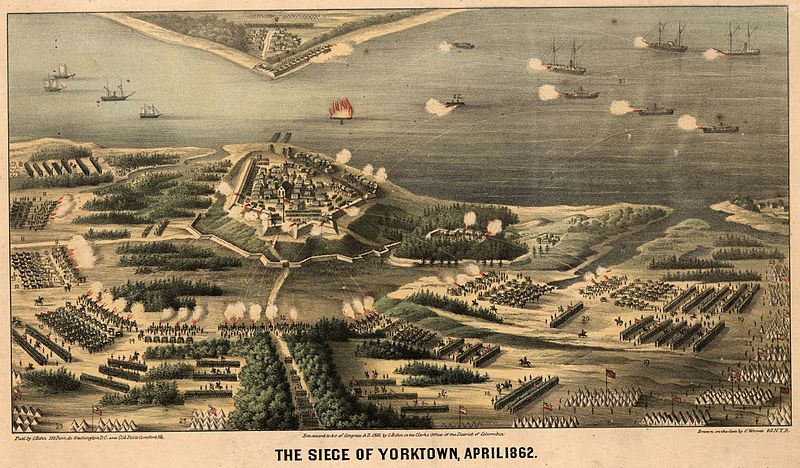
The British, under General Lord Charles Cornwallis, were surrounded and ultimately forced to surrender on October 19, 1781. The surrender at Yorktown effectively ended major combat operations in the Revolutionary War and paved the way for negotiations that led to the Treaty of Paris.
4. The Battle of Eutaw Springs (September 8, 1781)
Fought in South Carolina, the Battle of Eutaw Springs was one of the last major engagements in the southern theater of the war. American forces, commanded by General Nathanael Greene, fought against British troops led by Lieutenant Colonel Alexander Stewart.
While the battle was inconclusive, it further weakened British control in the region and contributed to their eventual withdrawal.
1782
These events in 1782 reflected the winding down of the American Revolution and the beginning of the peace process.
The signing of the Preliminary Articles of Peace set the stage for the formal end of the war, while the Gnadenhutten Massacre underscored the complexities and atrocities of the conflict.
The Siege of Gibraltar, although not directly linked to the American Revolution, was a notable military engagement during the same period. The evacuation of Charleston represented the final British withdrawal from the southern colonies.
1. Preliminary Articles of Peace (November 30, 1782)
Representatives from the United States and Great Britain signed the Preliminary Articles of Peace in Paris. These articles outlined the terms and conditions for ending the war and establishing peace between the two nations. The agreement set the stage for further negotiations and the eventual signing of the Treaty of Paris the following year.
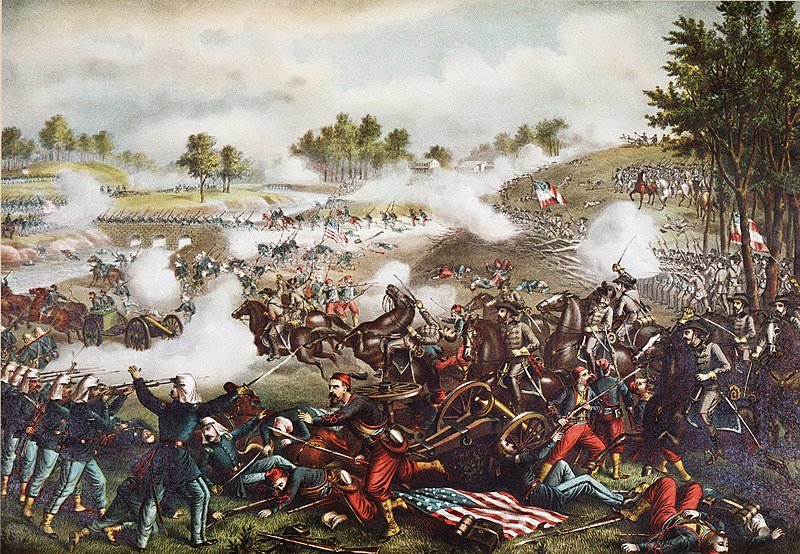
2. Gnadenhutten Massacre (March 8, 1782)
In one of the darkest incidents of the war, a group of American militiamen attacked the peaceful Moravian settlement of Gnadenhutten, located in present-day Ohio.
The militiamen brutally killed 96 Native American men, women, and children in an act of revenge for perceived Native American support for the British. The massacre highlighted the complex and violent relationships between colonists, Native American tribes, and the British during the war.
3. Siege of Gibraltar (June 24, 1779 – February 7, 1783)
Although not directly related to the American Revolution, the Siege of Gibraltar was a prolonged engagement between British and Spanish-French forces over control of the British-held fortress of Gibraltar.
The siege lasted until 1783 when the signing of the Treaty of Paris led to the cessation of hostilities and the end of the siege.
4. Evacuation of Charleston (December 14, 1782)
After years of British occupation, the city of Charleston, South Carolina, was finally evacuated by British forces. This marked the final withdrawal of British troops from the southern colonies and signaled the end of British control in the region.
1783
The events of 1783 marked the official conclusion of the American Revolution and the establishment of the United States as an independent nation.
The Treaty of Paris solidified the diplomatic recognition of the United States and defined its borders, while the evacuation of New York City marked the final departure of British forces.
Washington’s resignation reflected the principles of republican government and the transition to a civilian-led nation.
1. Treaty of Paris (September 3, 1783)
The Treaty of Paris was signed between Great Britain and the United States, formally ending the American Revolution.
Negotiated in Paris, the treaty recognized the United States as an independent nation and established its boundaries from the Atlantic Ocean to the Mississippi River.
It also secured the withdrawal of British troops from American territories and addressed issues such as property rights and the treatment of Loyalists.
2. Evacuation of New York (November 25, 1783)
After the signing of the Treaty of Paris, the last remaining British troops in the United States departed from New York City. This marked the final military action of the American Revolution and the complete withdrawal of British forces from American soil.
3. Washington’s Resignation (December 23, 1783)
General George Washington, commander-in-chief of the Continental Army throughout the war, resigned his commission in a formal ceremony held in the Maryland State House in Annapolis. His resignation symbolized the peaceful transfer of power from military to civilian authority and set a crucial precedent for the new nation’s commitment to civilian control of the military.
